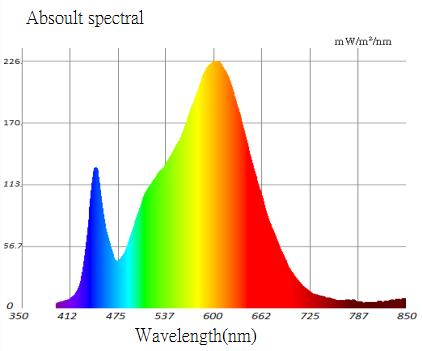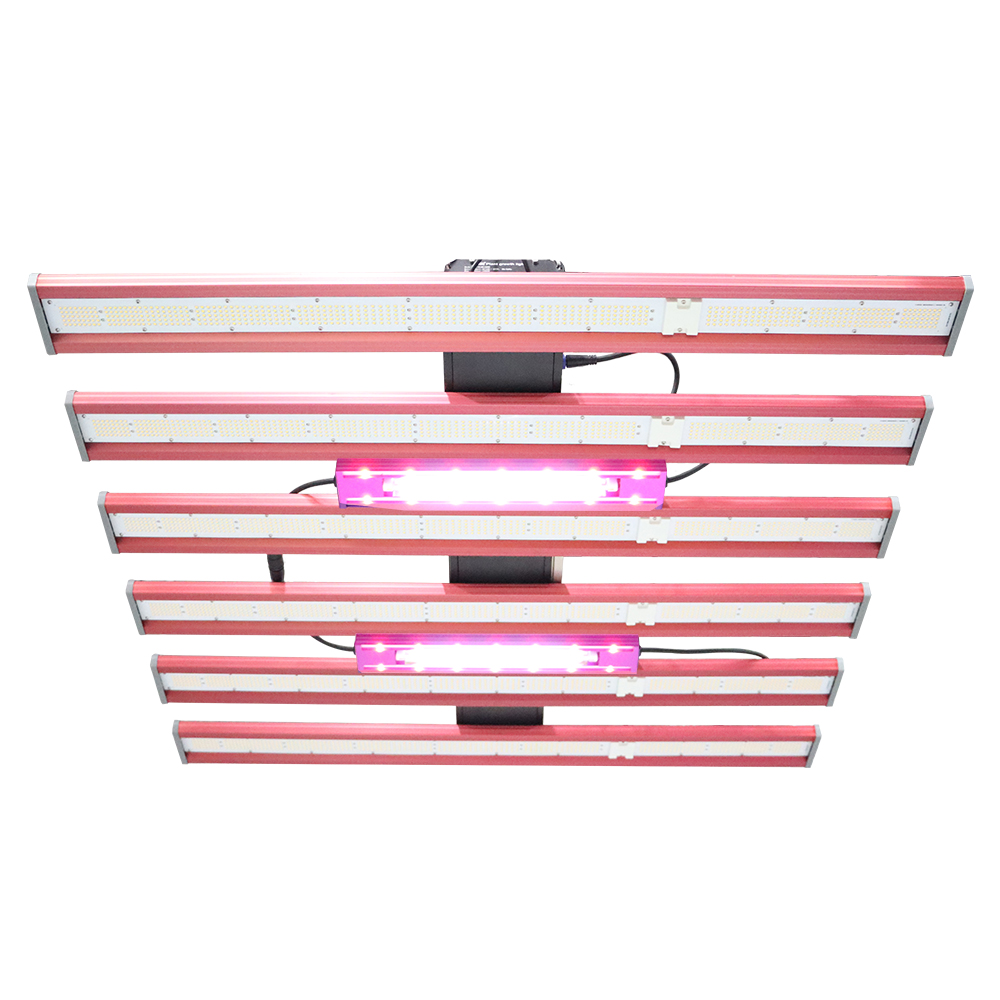Without doubt, sunlight is the best grow light to plants, even though it looks like white or golden colors by eyes, actually it contains all colors in the spectrum - visible and invisible. And all colors light in spectrum is defined by wavelength measured by nanometers (nm).
The sunlight contains all colors especially strong blue light and red light. Hence, growers thought that plants need only blue light and red light to grow in quite a long time. But science has proved that, blue light and red light play important roles in plant growth. Plants absorb some colors for photosynthesis, containing green light and yellow light, and even purple light for some plants.

Different colors of light
100-400 nm (Purple) light: help speed up the process of photosynthesis and help plants produce resin, which increases flavonoids and terpenes, they can help increased flavor and aroma in your plants, at the same time increase root production and protection Against Pests.
400-520 nm (Blue) light: affect the chlorophyll content in leaves, which have effect on leaf thickness and plant height. Plants receive enough of blue light can have strong stems and leaves.
500-600 nm (Green) light: it is considered the useless efficient wavelength in visible spectrum for plants, but it is actually useful in photosynthesis and change the plant architecture. Green light can pass trough the thick canopies and grow the leaves in lower level.
630-660 nm (Red) light: it is responsible for promote plants flowering and producing fruit. And it is essential to seed germination, root growth and also leaves expansion.
700-750 nm (Far Red) light: far red lights can increase leaf dimension, and reduce the flowering stage.
An experienced grower will purchase grow light with specific spectrum, it can provide correct light to plants.
Three key measurements
There are three key measurements of light that every indoor grower must know and understand how they affect the photosynthesis and plant growth.
PAR
PAR (Photosynthetically Active Radiation): It is the wavelength of light that plants use for photosynthesis. PAR is not a measurement of light, but mean the visible wavelength from 400nm to 700 nm in the light spectrum which can be used to plants for photosynthesis.
PPF
PPF (Photosynthetic Photon Flux): It is the total amount of photons in the PAR range produced each second by the source of light. It is measured in micro moles per second (unit: µmol/s). It can show how much light has been produced by the light source. It means the quantity of photon output by source of light.
PPFD
PPFD (Photosynthetic Photon Flux Density): It is the measurement of the PPF in a defined area. It is measured in micro moles per square meter per second (µmol/m2/s). It means the quantity of photon that reaches plants.
More related:LED light as well as different wavelengths affect in plant growth
A good LED grow light can be displayed by PPFD data (or say PPFD map). It shows how much usable light is being produced at specific place in a defined area.

Blue light or Red light is better?
Outdoors plants in sunlight will naturally absorb enough red and blue light, but indoor plants possible are lack of blue or red light.
If you plants is getting elongated, losing the green color in its leaves, the issues are it is lack of enough blue light.
If the plants are not flowering at the suitable time you know it should be, it is probably lacking in red light.
While red is most efficient and important for photosynthesis, but growing plants under only red light would result in poor growth such as leggy stems, so blue is added to keep plants in typical shape and strong stems. Meanwhile, you can grow plants with only blue light either, as their growth will be adversely affected.
There is not certain answer to which light the blue light or red light is more better for plant growth, since both red light and blue light are necessary to the growth and health of the indoor plants. As researcher’s found after many years, that having a combination light red light to a lower blue light has been proved to be optimum for the greenhouse crops that can receive light from sun in daytime. There is no ideal spectrum for greenhouse crops.
Importance of UV light and FR light

Ultraviolet light
As well known, red wavelengths for flowering, blue for vegging, but UV light is highly contested in the growing world. Some growers claim not to have a difference using UV light, while others insist UV can bring out a plants’natural flavors and scents better.
First of all we should know that only two types of UV light UVA and UVB is workable in grow room. Another two are too powerful to be used to plants.
UVA light (between 320 to 400 nm): This light is utilized in many grow lights. It can’t be perceived by humans.
UVB light (between 290 to 320 nm): This type of UV light is not safe to human.
People who use grow lights with UV can have bigher quality yields, because UV can faster photosynthesis and lead to increased plant growth.
If grower gives too strong or too close UV to plants, the UV will do a harmful job to them. The result is to bleach the plants. Plants is bleaching because its cells are given too much light that they can absorb. They become damaged and discolored to protect themselves, but finally lead to die.
Far Red Light
Far red light is found at the end of the red spectrum, ranging from 700-750nm. It is dimly visible to human eyes. And growers always can’t distinguish far red light from infrared light. The difference is far red light produce heat, but it produces much less heat than infrared light.
Far red light interact with short wavelength light to increase the efficiency of photosynthesis.
On the other hand, far red light can influence leaf size, stem length and the overall size of a plant.
Adding far red wavelength into growth spectrum will produce a shade avoidance response in most plants. Because plants think they are in the shade when they perceive far red light, and their natural action is try to seeking more light. And then the plants will grow taller or increase their leaf dimension to capture more light.























